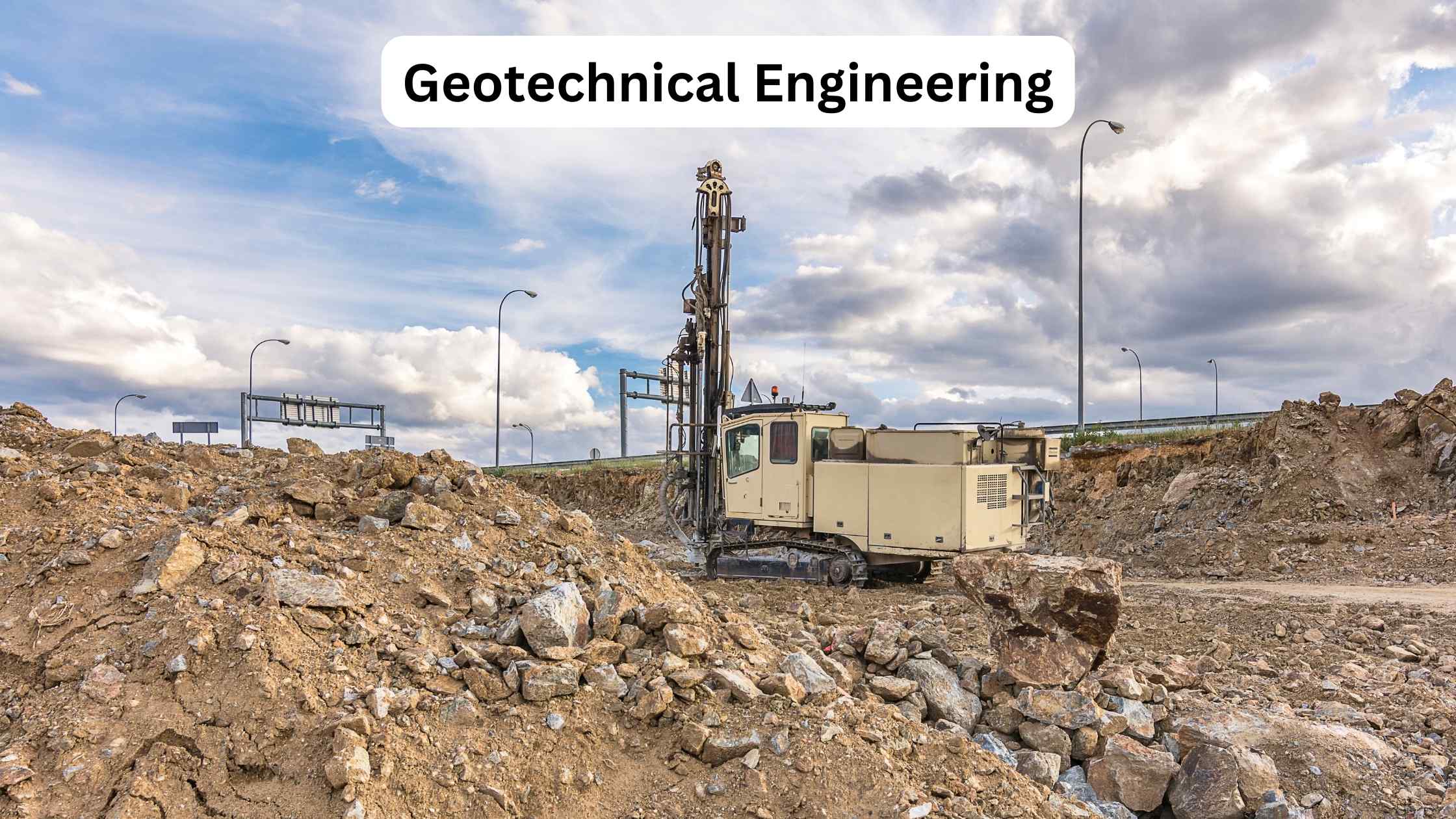Major Branches in Civil Engineering
-
Kumar Abhishek Anand
- October 23, 2023

Civil engineering is an engineering branch that deals with the physical world and it is becoming increasingly essential due to the rapid growth in demand for improved infrastructures, efficient forms of structures and traveling, green initiatives, etc. Civil engineering includes designing, maintenance, analysis and development of the physical environment which consists of buildings, roads, dams, bridges, canals, sewerage systems, hyperloop structures, railway bridges, tunnels, pipelines, etc. With the increased demand for innovation in construction technologies and methods along with their proper execution, and thus with the increased burden on civil engineers comes a need and increase in specialization and disciplines falling under the civil engineering roof. Different types of civil engineers have quite the variation in their day-to-day operational activities and the construction project with which they are related.
At present time the most important civil engineers in the construction industry are structural engineers, geotechnical engineers, transportation engineers, water resource engineers, environmental engineers and construction & project management engineers.
Types of Civil Engineering
1.Structural Engineering– Among the oldest types of engineering, structural engineering dates back to the early instances when tree branches were bound together with vines to create shelters. Structural Engineering is a branch of civil engineering that lays its focus on the framework of structures and their design so that they can resist the stresses and strains of the loading environment and stay safe, stable and protected throughout their lifespan. In short, it is the responsibility of structural engineers to ensure that the building structures such as bridges, houses, flyovers do not fail under working and limiting conditions.

A structural engineer typically has in-depth knowledge about physics, mathematics and material properties such as hardness, density, bulk modulus, tensile strength and bending strength. They must be able to predict or compute the behavior of different materials under loading conditions such as tension, compression, twisting, bending, and distinct environment conditions such as pressure, temperature, radiation over an extended period of time.
Structural engineers have to perform structural analysis and design of building structures. The final execution design must fulfill all the project and safety requirements, environmental regulations and regulatory codes to ensure the safety of the structure and the public related to them in any possible way. At present time, structural engineers are extensively using computer-aided design(CAD) systems to perform accurate calculations and simulations. CAD systems help structural engineers to speed up the design process along with quick and effortless design modifications.
A part of the core construction team, structural engineers are responsible for the design of the skeletal framework of the proposed structure. While designing the structural framework of the structure, structural engineers need to consider numerous factors such as terrain conditions, wind patterns, water levels, rainfall trends, traffic conditions and more requisite parameters. They have to analyze blueprints, maps, previous reports, geospatial data before initiating the design process. The structural assembly has to be designed as per the loading conditions and other material stress factors.
2.Transportation Engineering– Transportation engineering deals with the planning, design, operation and maintenance of safe and organized transportation systems. In short, transportation engineers deal with the technology and scientific principles to the planning, designing, constructing and managing of transportation facilities which include highways, roadways, footpaths, intersections, roundabouts, railways, etc. They ensure safe, fast, comfortable, economical, convenient and environmentally friendly movement of people and goods transport.

The planning stage of transportation engineering comprises technical forecasting decisions and political factors as parameters. Technical forecasting of passenger travel involves a specific transportation planning model which requires certain input data such as trip generation estimate, trip distribution, choice of mode of transport, route determination. Intricate transportation models may require more input parameters than usual and the main factor influencing transport engineering can be considered to be passenger trips as they often illustrate the peak traffic on any transportation system. The transportation engineer also needs to take into consideration the users’ behavior.
The design stage in transportation engineering consists of estimating the dimensions of transport facilities, computing the materials and thickness requirement to be used in the pavement geometric design of the roadway. In addition to these processes, logistics management, network analysis, financials and policy assessment operations are also essential for the design and construction of pavement, especially highway and urban roadways. The transportation engineering system can be understood completely by referring to the three main entities- infrastructure, individual unit and user. Generally, infrastructure and individual units are taken to be on the supply side of the computing equation while the users can be related to demand.
The data used in the design of transportation systems and the study related to it is mostly observational in nature which reflects as a striking feature referred to by the transportation engineers. When practical data is not available from historical data records about transport systems and patterns, statistical analysis and techniques can be used to handle the missing data or other available data can be brought into use somehow. Transportation engineers can further specialize in 5 different sectors or areas which are Highway Engineering, Railway Engineering, Port & Harbour Engineering, Airport Engineering and Pipeline Engineering.
Geotechnical Engineering– Geotechnical or Soil Engineering specifically deals with the determination of the strength and deformation properties of soil when viewed from a scientific perspective. Geotechnical engineering involves working with soil and its components such as clay, silt, rock, sand and snow, and is the practical application of geology.

The purpose of geotechnical engineers is to investigate various geological factors and properties by using soil and rock mechanics principles to devise ways that can be used for efficient construction techniques. The analysis, design and construction of foundations, slopes, embankments, tunnels, retaining walls, levees, wharves, landfills, roadways and other such structures either supported or made of soil comprise geotechnical engineering.
In the current construction environment, the term Geotechnics is used as a superset for theoretical and practical applications of geotechnical engineering. Geotechnical engineers are associated with a construction project from a very early stage just after the planning and designing stage. Therefore they can affect the project from its initial stages by playing a crucial role.
Environmental Engineering– In recent years environmental engineering has become one of the most important and most demanded civil engineering branches due to the growing environmental impact of construction processes. Environmental engineering is quite a broad field in civil engineering that involves the application of principles of science and engineering to protect and sustain or improve environmental conditions.

The major areas included in environmental engineering are air pollution control, wastewater management, solid waste disposal, public health, hazardous waste management, recycling, industrial hygiene, etc. Each of these areas can be further divided into several sub-categories. Environmental engineers work to develop solutions for environmental problems using the principles of biology, chemistry, soil science and engineering. They put in efforts to enhance recycling, waste management, public health, air and water quality and other environmental factors.
While working on a construction project, environmental engineers conduct studies related to hazardous waste management to evaluate the impact of the hazards and suggest methods to keep them in check. The most important function which the environmental engineers have to fulfill is to protect public health by sustaining and improving the environment. They conduct research and development processes to design distinct pollution control equipment and devices, construction and erection methods, implementation and execution of environmental procedures.
Not only do environmental engineers work towards the protection and improvement of the environment but also the health and safety of the employees on site. The need for environmental engineers is in construction projects such as evaluating the impact on soil and groundwater due to the proposed project, wetlands and streams assessment via delineation, determination and categorization to identify impacts exactly, designing control solutions to prevent erosion, air and water pollution, and many similar projects, that require information and review of environmental data.
5.Water Resource Engineering– Water resource engineering is a part of civil engineering that deals with the arrangement and management of water for human use and the development of methods and techniques to resist the impact of floods. In other words is the study and management of equipment, facilities, and techniques pertaining to the management and preservation of life’s most plentiful resource, water. Water may be renewable in terms of its scope of usage but it is not as abundant in present times as it was before, which many climatologists and other scientists have indicated is a result of climate change.
Share
Kumar is a digital content professional with more than 2 years of experience in Blog writing, copywriting and scripting. His passion lies in the art of creating convincing content that plays a major role in converting leads for SAAS businesses.












